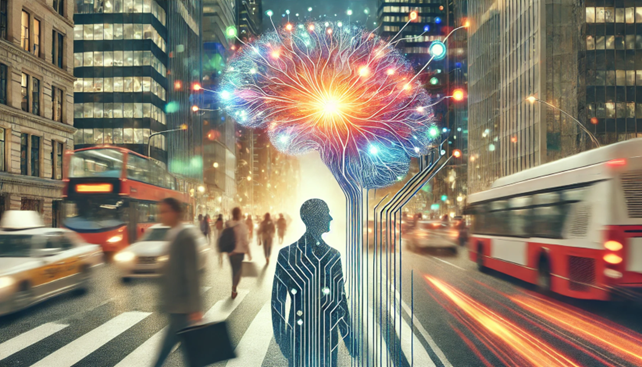Modern, hectic and competitive life, where every minute seems precious and every opportunity unmissable, can easily generate stress and high levels of anxiety, which should not be ignored but addressed effectively. Precisely in response to this growing need, science is exploring new ways to treat anxiety, seeking innovative solutions that go beyond traditional treatments.
The field of scientific research on anxiety treatments is experiencing a real revolution. A recent international study has revealed that a psychedelic compound known as DOI (2,5-dimethoxy-4-iodoamphetamine) can reduce anxiety by activating particular cells in the brain without causing hallucinogenic effects. This discovery could offer new therapeutic possibilities for dealing with anxiety and other mental disorders without the side effects associated with traditional drug treatments.
In recent years, psychedelic substances such as psilocybin, LSD and mescaline have attracted increasing interest for their ability to modulate mood and relieve anxiety and depression. However, the precise mechanisms by which these compounds act on the brain are not yet fully understood. The study in question, published in the scientific journal Neuron (Ventral hippocampal parvalbumin interneurons gate the acute anxiolytic action of the serotonergic psychedelic DOI: Neuron), shed light on one such mechanism, finding that DOI activates a class of cells in the hippocampal region, called rapid discharge interneurons, that can inhibit neighboring neurons. This process could represent a novel way to reduce neuronal hyperactivity related to anxiety states.
The hippocampus is a key structure for social memory and emotion. According to this study, activation of fast-discharge interneurons would appear to reduce anxiety without activating the neural circuits responsible for hallucinations. This distinction is crucial because one of the main obstacles to the therapeutic use of psychedelics is precisely their ability to induce altered experiences of reality.
The results of this research suggest that the new drugs could become a safe alternative to conventional anxiolytics, such as benzodiazepines, which can lead to addiction and other long-term side effects. This study, therefore, represents a significant step forward not only in understanding the neurological mechanisms of anxiety, but also in developing safer and more targeted treatments.
This achievement was made possible by an international collaboration between prestigious universities, demonstrating how global cooperation is essential in a field as complex as neurobiology. In the future, researchers plan to further investigate the role of the amygdala, a brain structure that processes emotions and may interact with the hippocampus in modulating anxiety.
In conclusion, studies like this show us the potential of substances once considered exclusively dangerous. With the ability to isolate targeted therapeutic effects from harmful psychotropic effects, drugs derived from psychedelic substances could fully enter modern medicine, offering an innovative and potentially revolutionary solution for millions of people suffering from anxiety disorders.
The article Psychedelics and anxiety, new frontiers in neurobiological research comes from TheNewyorker.

